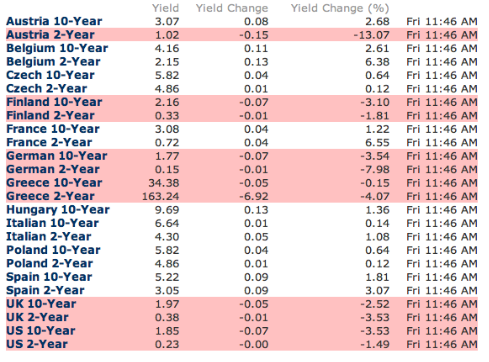Apple Suppliers 2011
AAC Technologies Holdings Inc.
AcBel Polytech Inc.
Acument Global Technologies
Advanced Micro Devices, Inc.
Amperex Technology Ltd.
Amphenol Corporation
Analog Devices, Inc.
Anjie Insulating Material Co., Ltd.
Asahi Kasei Corporation
AU Optronics Corporation
Austria Technologie & Systemtechnik
AG austriamicrosystems
Avago Technologies Ltd.
Brady Corporation
Brilliant International Group Ltd.
Broadcom Corporation
Broadway Industrial Group Ltd.
ByD Company Ltd.
Career Technology (MFG.)
Catcher Technology Co., Ltd.
Cheng Loong Corporation
Cheng Uei Precision Industry Co., Ltd.
(Foxlink) Chimei Innolux Corporation
Coilcraft, Inc.
Compeq Manufacturing Co., Ltd.
Cosmosupplylab Ltd.
CymMetrik (Shenzhen)Printing Co
Cyntec Co., Ltd.
Cypress Semiconductor Corporation
Daishinku Corporation (KDS)
Darfon Electronics Corporation
Delta Electronics Inc.
Diodes Inc.
Dynapack International Technology
Elpida Memory, Inc.
Emerson Electric Co.
ES Power Co., Ltd.
Fairchild Semiconductor
International Fastening Technology Pte Ltd.
FLEXium Interconnect, Inc.
Flextronics International Ltd.
Fortune Grand Enterprise Co., Ltd.
Foster Electric Co., Ltd.
Fuji Crystal Manufactory Ltd.
Fujikura Ltd.
Grand Upright Technology Ltd.
Gruppo Dani S.p.A.
Gruppo Peretti
Hama Naka Shoukin Industry Co., Ltd.
Hanson Metal Factory Ltd.
Heptagon Advanced Micro-Optics Pte Ltd.
Hi-P International Ltd.
Hitachi-LG Data Storage
Hon Hai Precision Industry Co., Ltd. (Foxconn)
Hynix Semiconductor Inc.
Ibiden Co., Ltd.
Infineon Technologies
AG Intel Corporation
Interflex Co., Ltd.
International Rectifier Corporation
Intersil Corporation
Inventec Appliances Corporation
Jabil Circuit, Inc.
Japan Aviation Electronics Industry, Ltd.
Jin Li Mould Manufacturing Pte Ltd.
Kaily Packaging Pte Ltd.
Kenseisha Sdn. Bhd.
Knowles Electronics
Kunshan
Changyun Electronic Industry
Laird Technologies
Lateral Solutions Pte Ltd.
Lens One Technology (Shenzhen) Co., Ltd.
LG Chem, Ltd.
LG Display Co., Ltd.
LG Innotek Co., Ltd.
Linear Technology Corporation
Lite-On Technology Corporation
Longwell Company
LSI Corporation
Luen Fung Commercial Holdings Ltd.
Macronix International Co., Ltd.
Marian, Inc.
Marvell Technology Group Ltd.
Maxim Integrated Products, Inc.
Meiko Electronics Co., Ltd.
Microchip Technology Inc.
Micron Technology, Inc.
Mitsumi Electric Co., Ltd.
Molex Inc.
Multek Corporation
Multi-Fineline Electronix, Inc.
Murata Manufacturing Co., Ltd.
Nan ya Printed Circuit Board Corporation
NEC Corporation
Nippon Mektron, Ltd.
Nishoku Technology Inc.
NVIDIA Corporation
NXP Semiconductor N.V.
ON Semiconductor Corporation
Optrex Corporation
Oriental Printed Circuits Ltd.
Panasonic Corporation
PCH International
Pegatron Corporation
Pioneer Material Precision Tech
Prent Corporation
Primax Electronics Ltd.
Qualcomm Incorporated
Quanta Computer Inc.
Renesas Electronics Corporation
Ri-Teng Computer Accessory Co., Ltd.
ROHM Co., Ltd.
Rubycon Corporation
Samsung Electro-Mechanics Co., Ltd.
Samsung Electronics Co., Ltd.
SanDisk Corporation
SANYO Electric Co., Ltd.
SDI Corporation
Seagate Technologies
Seiko Epson Corporation
Seiko Group
Sharp Corporation
Shimano Inc.
Shin Zu Shing Co., Ltd.
Silego Technology Inc.
Simplo Technology Co., Ltd.
Skyworks Solutions Inc.
Sony Corporation
Standard Microsystems Corporation
STMicroelectronics
Sumida Corporation
Sumitomo Electric Industries, Ltd.
Sunrex Technology Corporation
Suzhou Panel Electronic Co., Ltd.
Taiyi Precision Tech Corporation
Taiyo Yuden Co., Ltd.
TDK Corporation
Texas Instruments Inc.
Tianjin Lishen Battery Joint-Stock Co., Ltd.
Toshiba Corporation
Toshiba Mobile Display Co., Ltd.
Toyo Rikagaku Kenkyusho Co., Ltd.
TPK Holding Co., Ltd.
Tripod Technology Corporation
TriQuint Semiconductor
Triumph Lead Electronic Tech Co.
TXC Corporation
Unimicron Corporation
Unisteel Technology Ltd.
Universal Scientific Industrial Co., Ltd.
Vishay Intertechnology
Volex plc
Western Digital Corporation
Wintek Corporation
yageo Corporation
Zeniya Aluminum Engineering, Ltd.
Comments »


